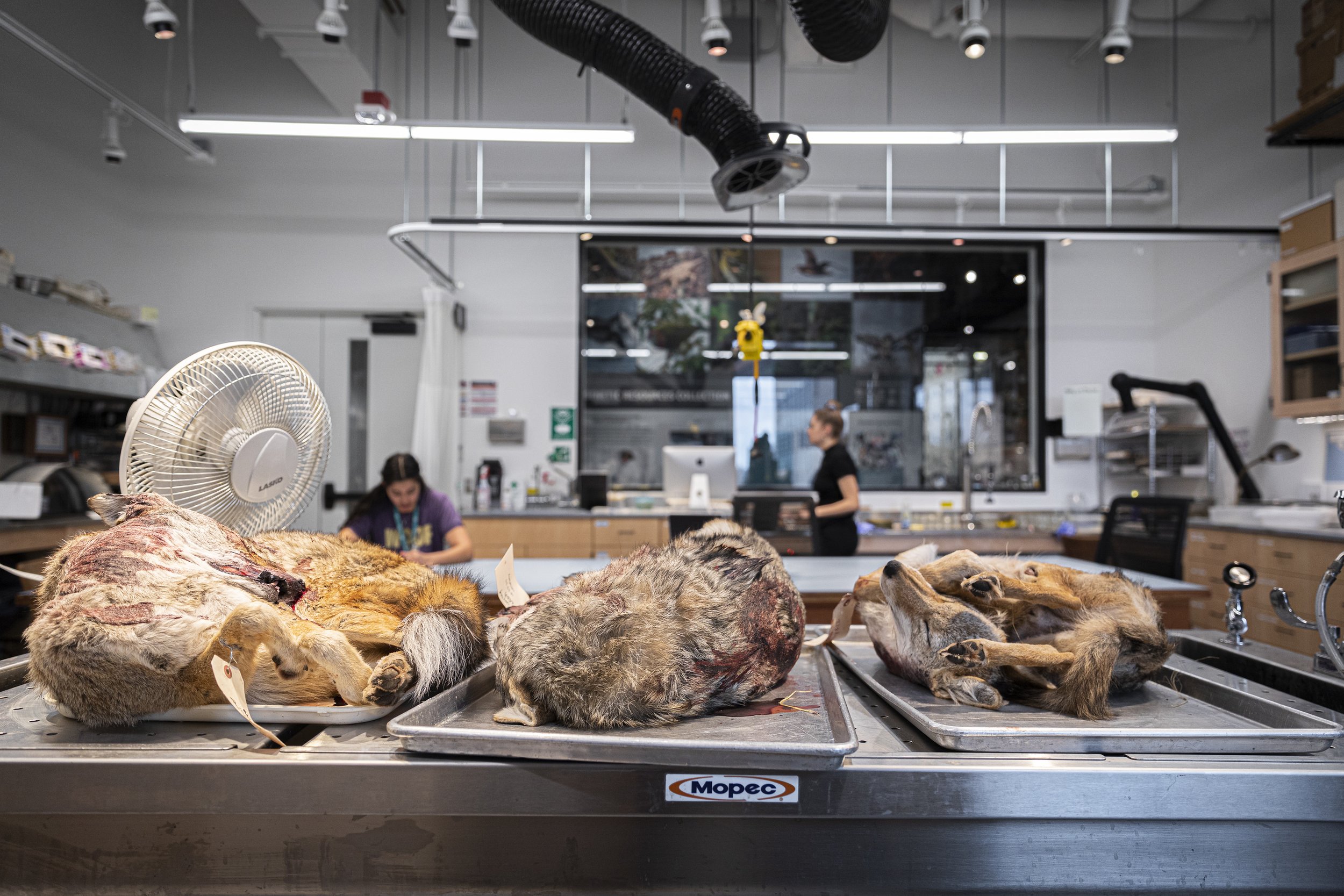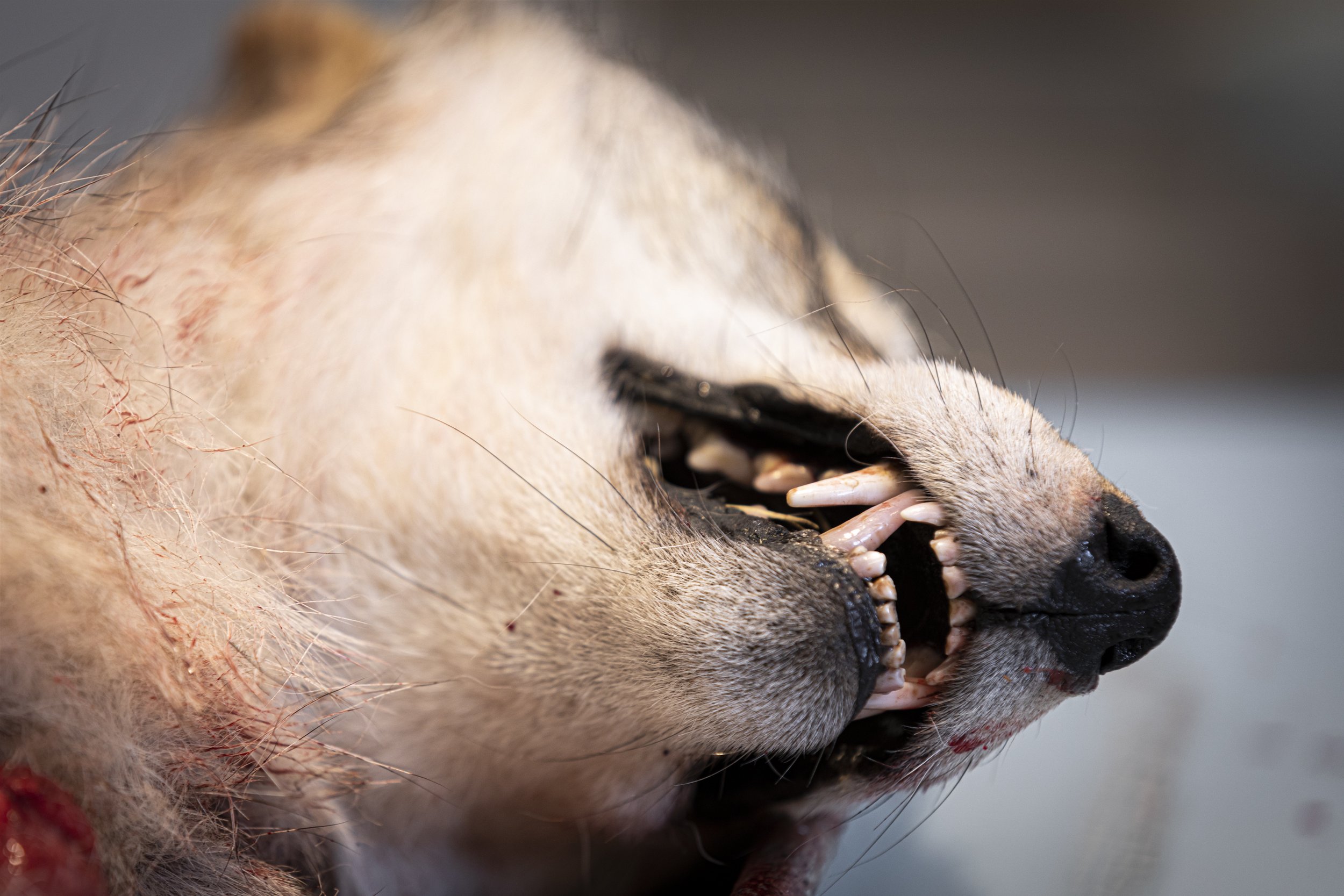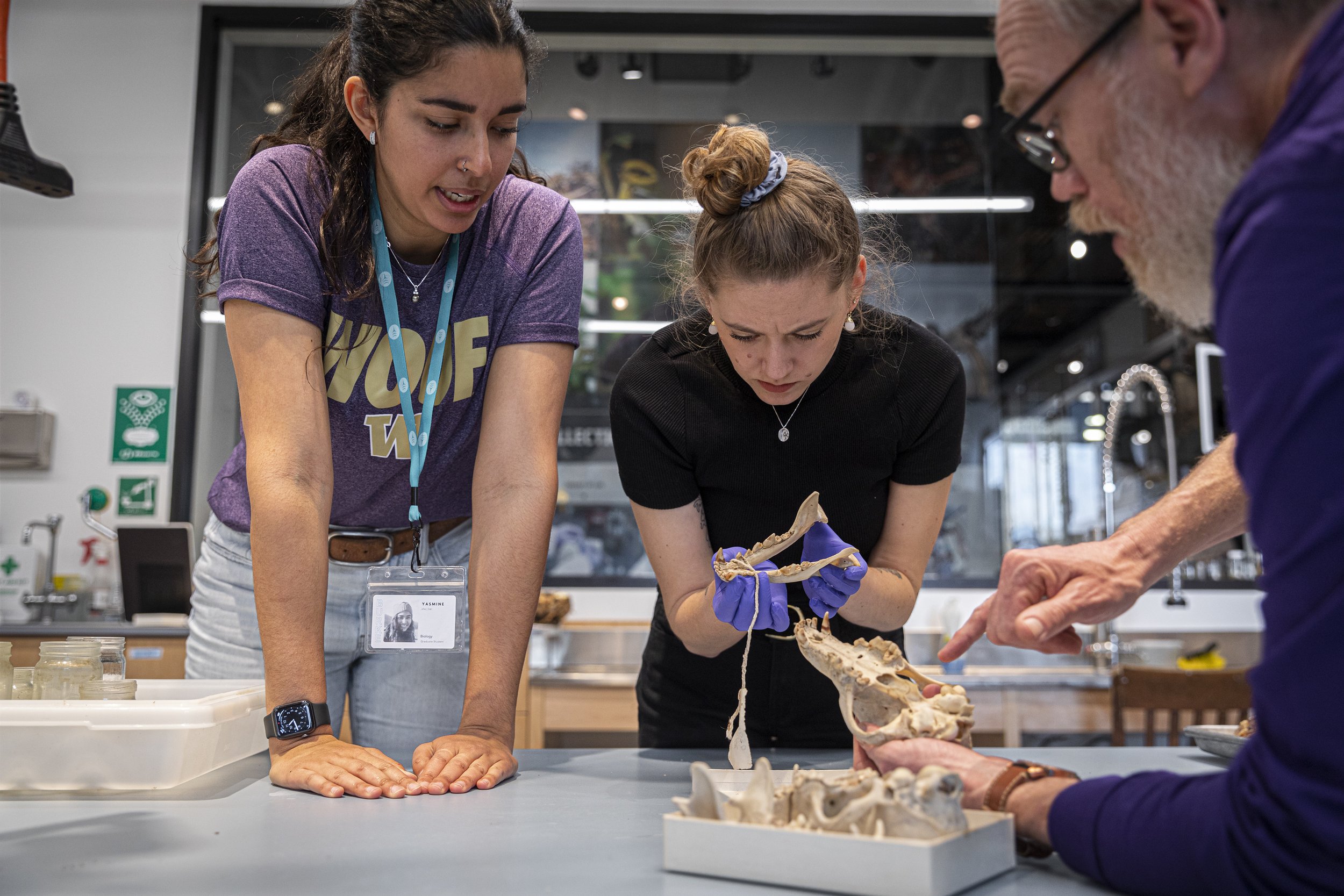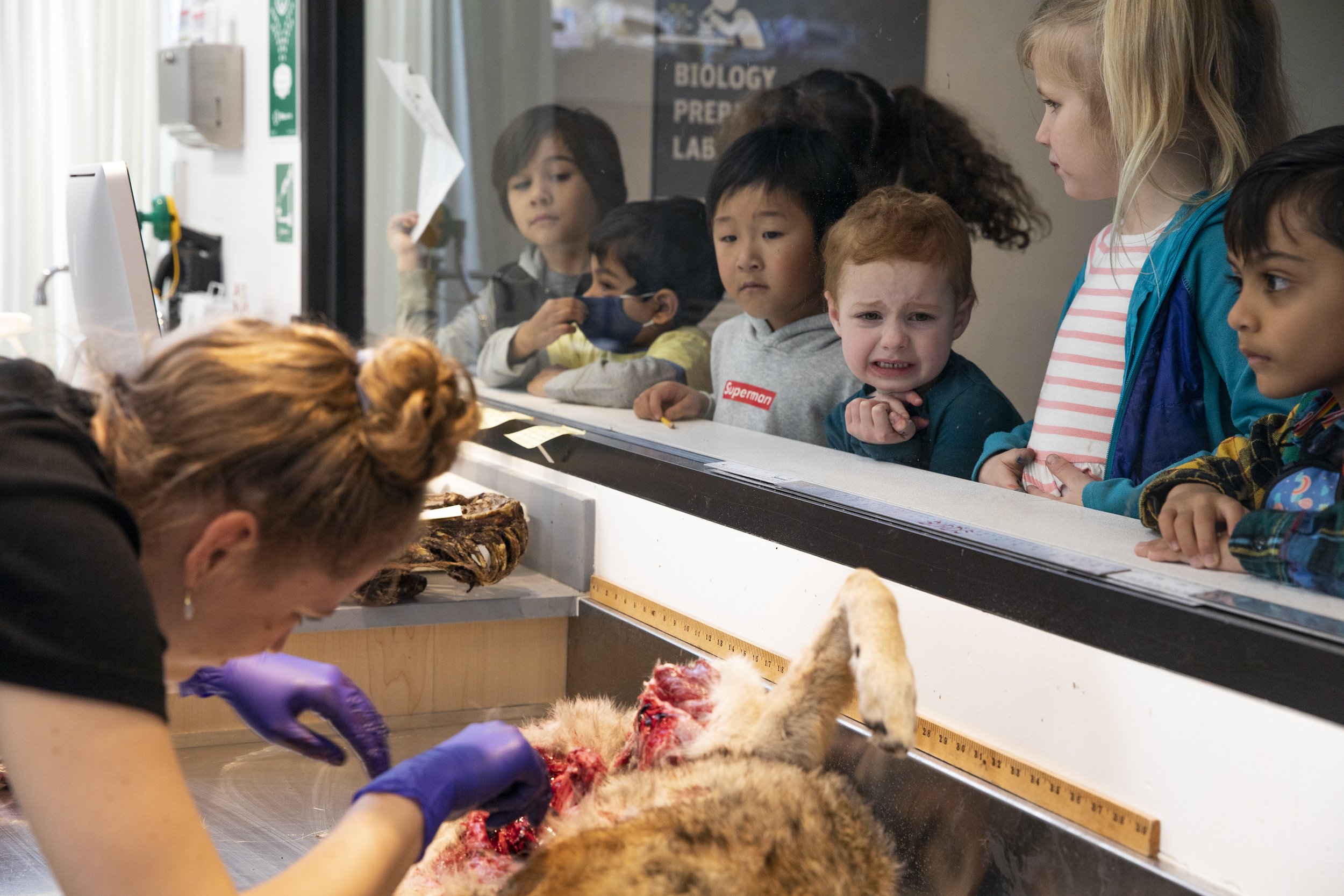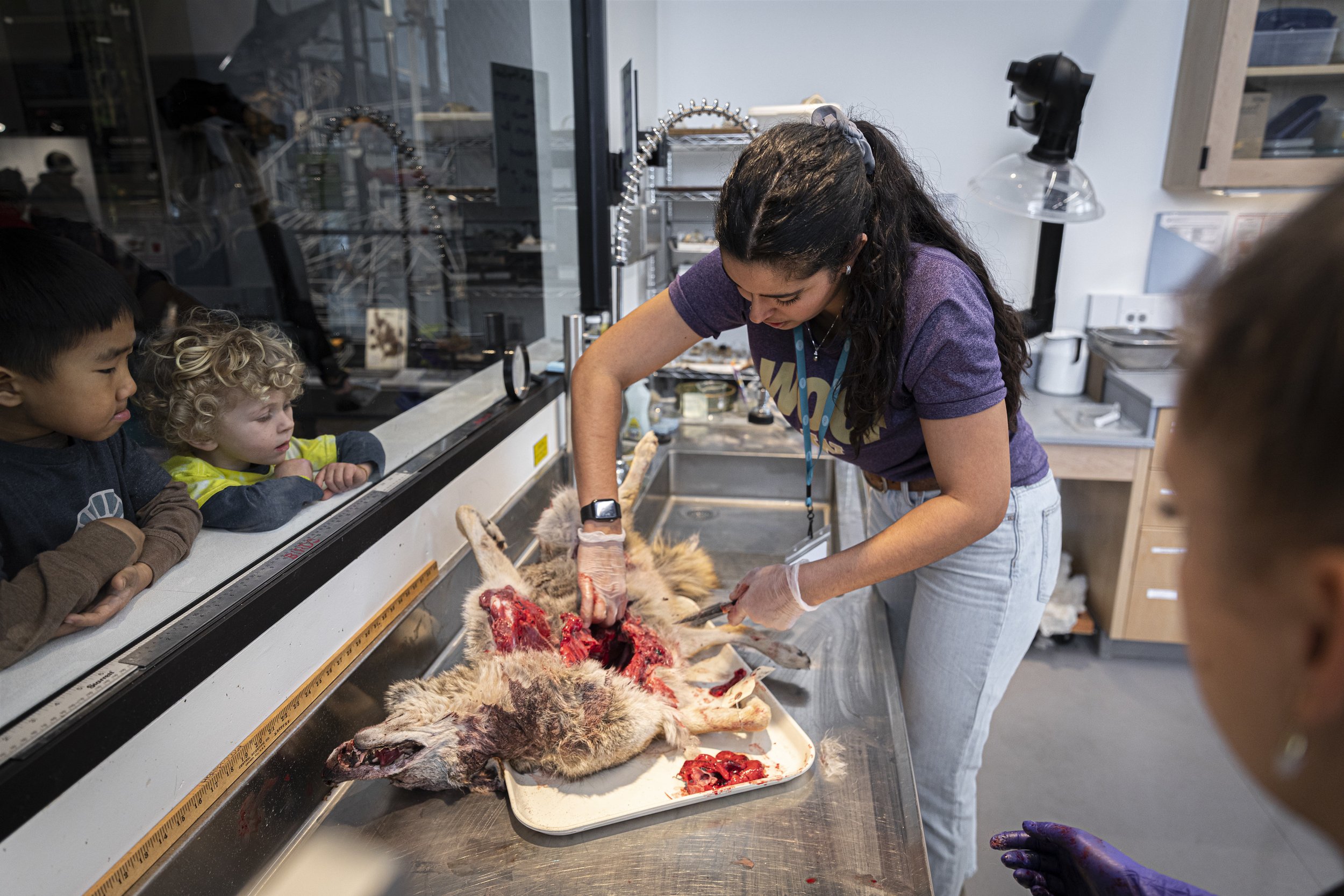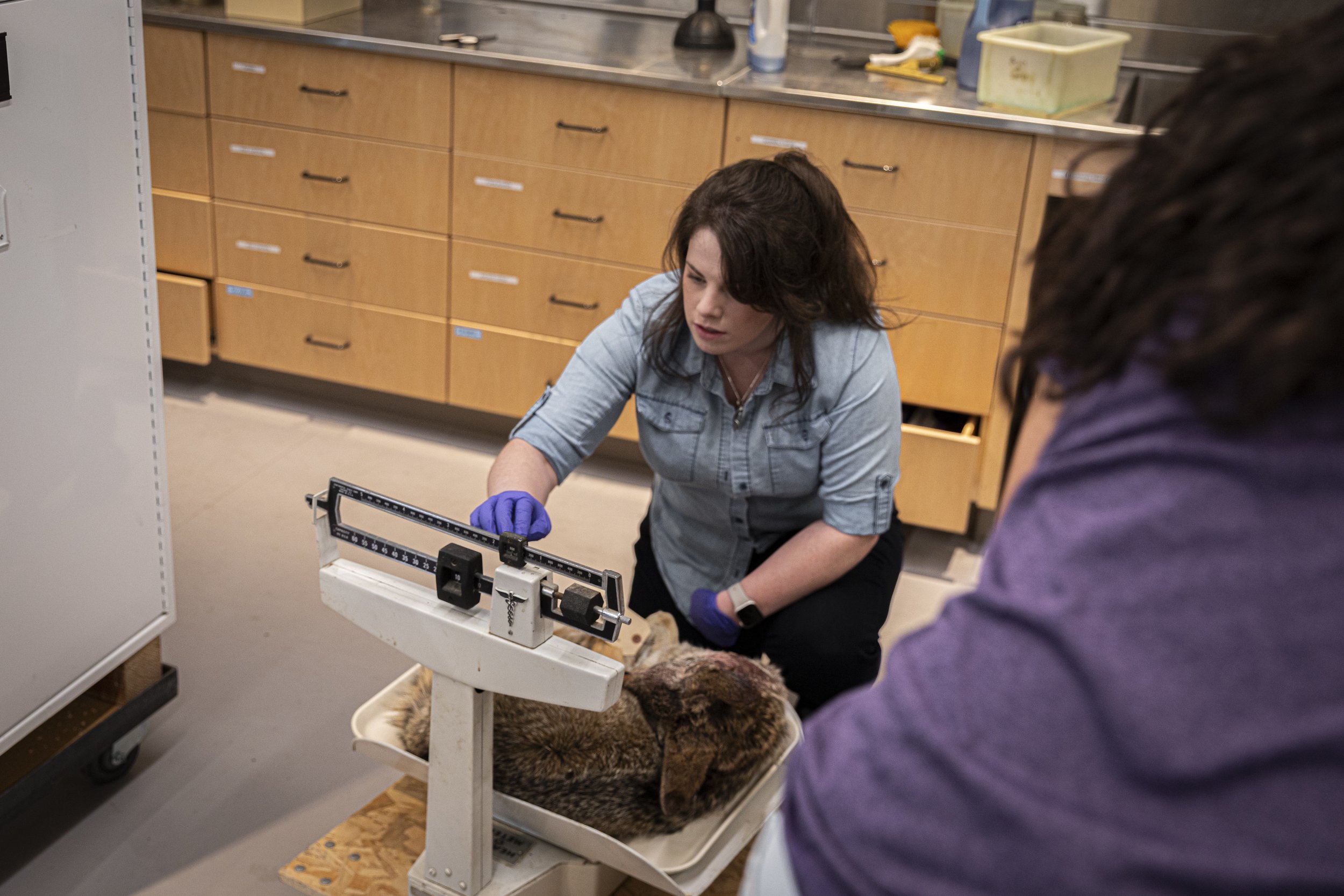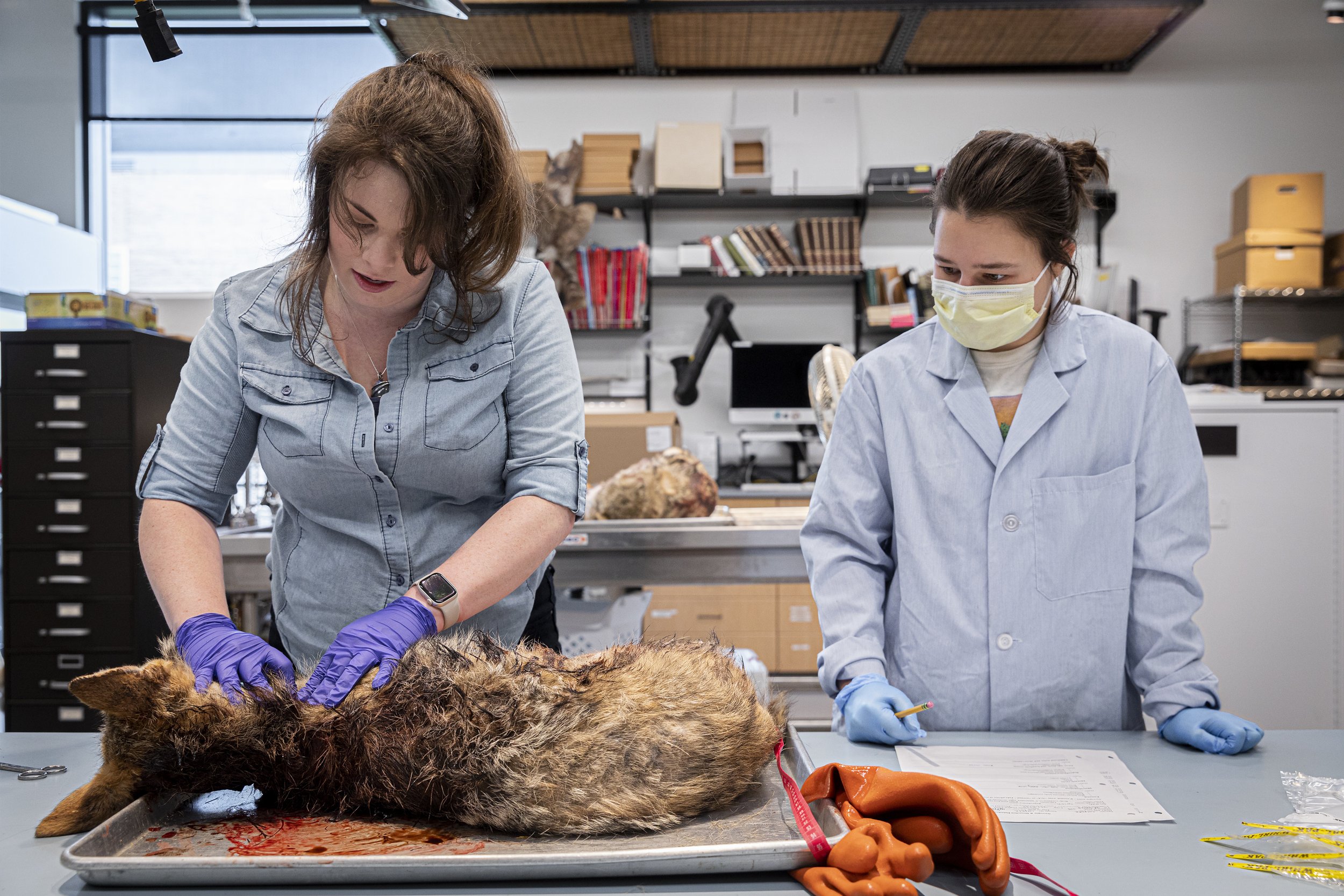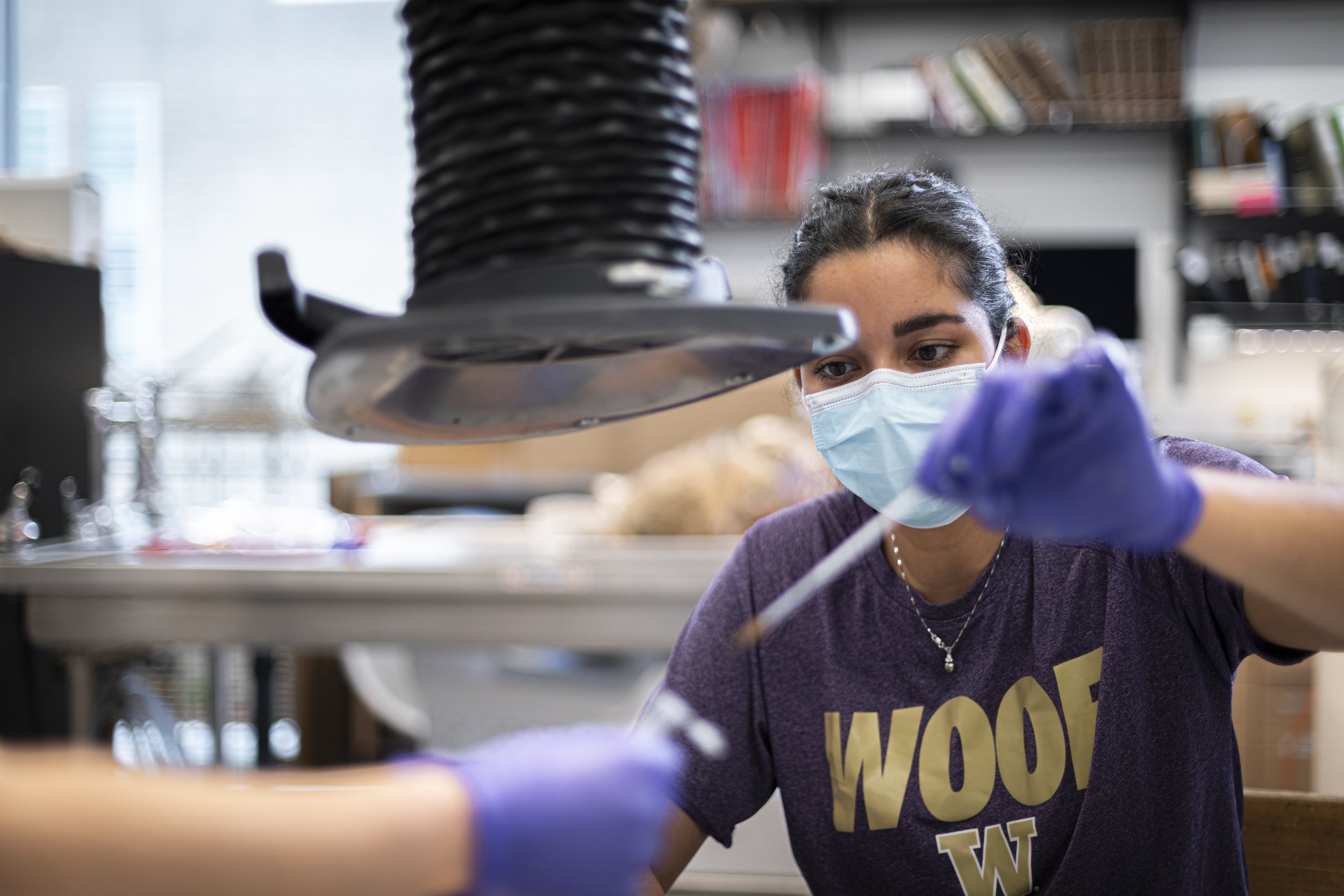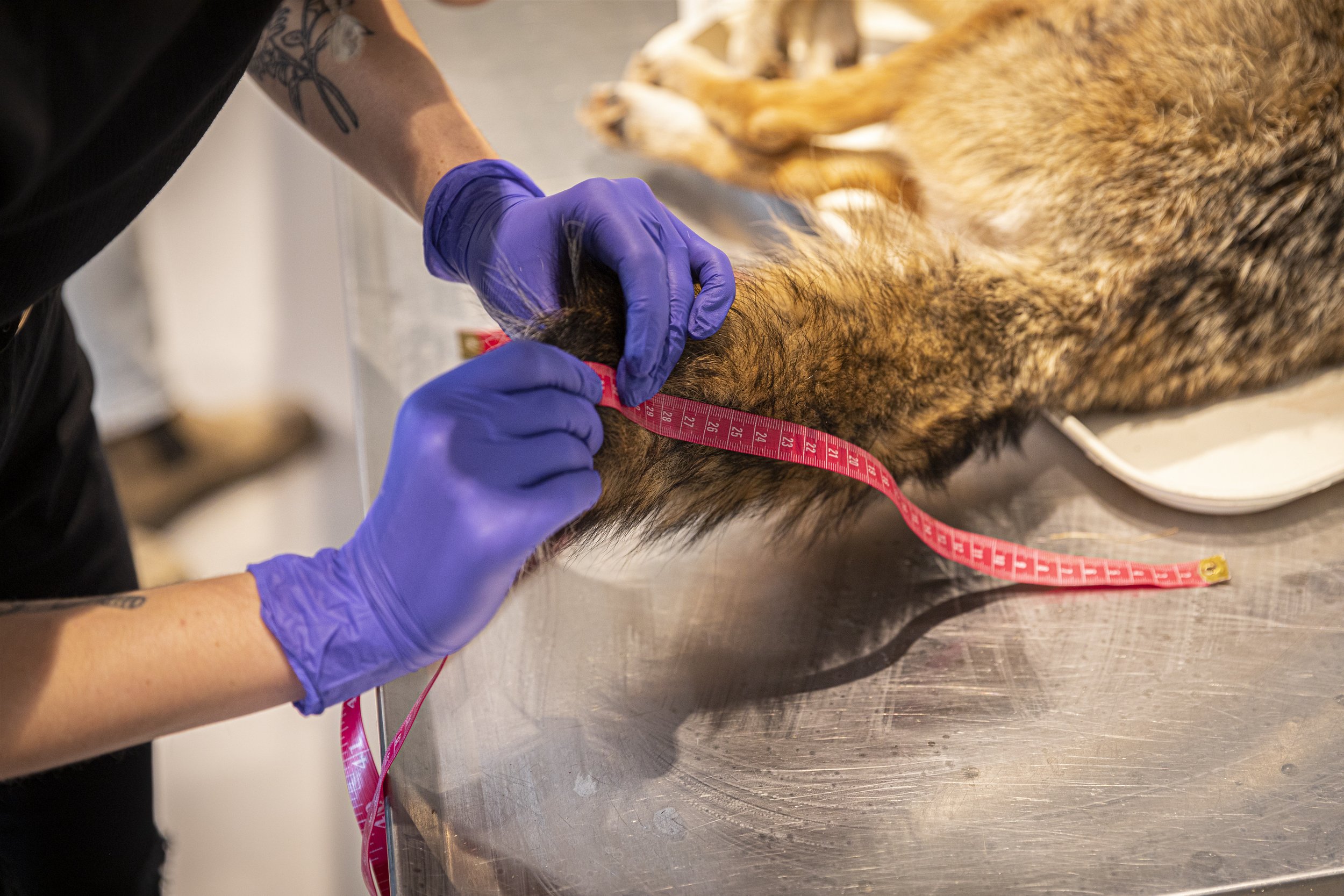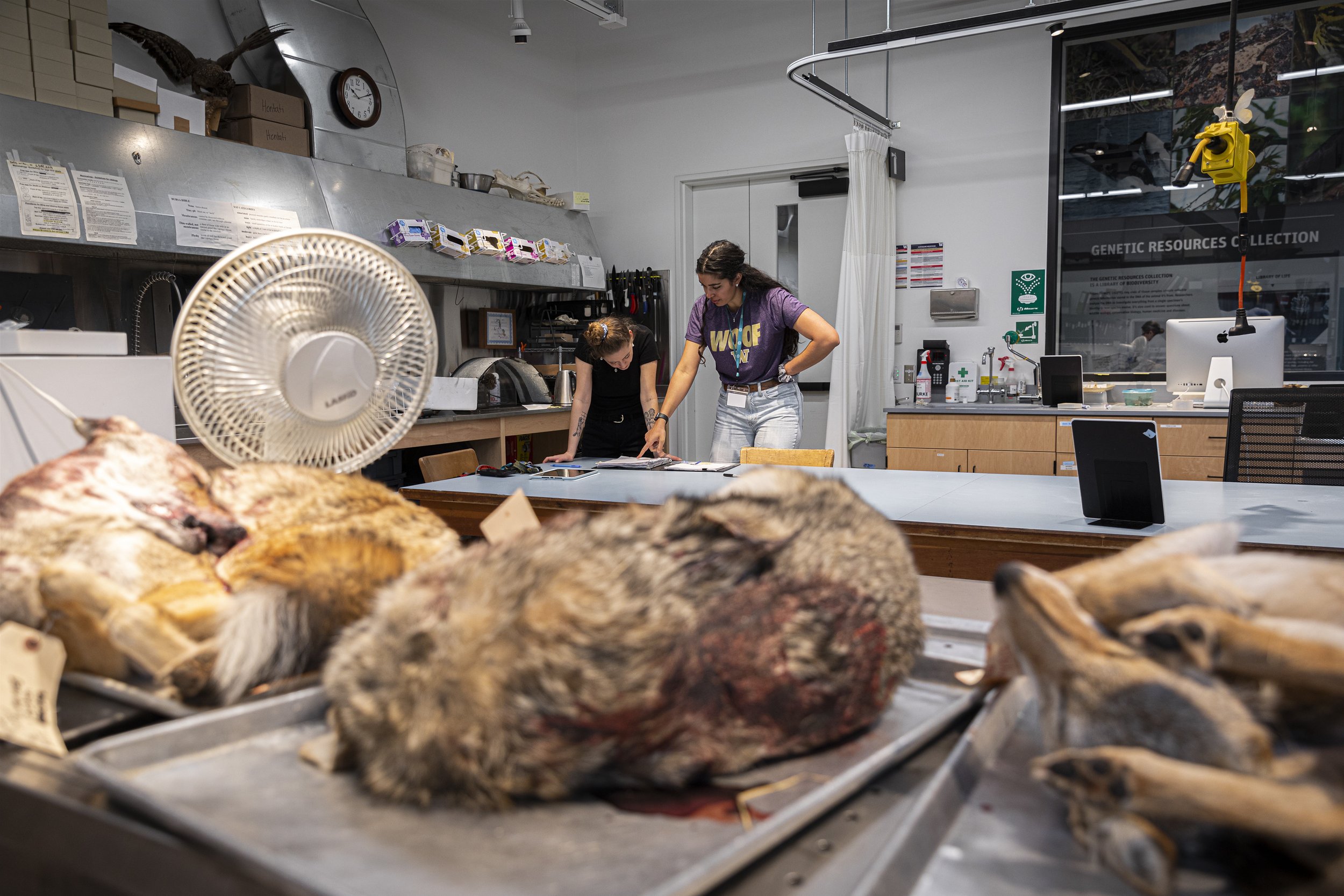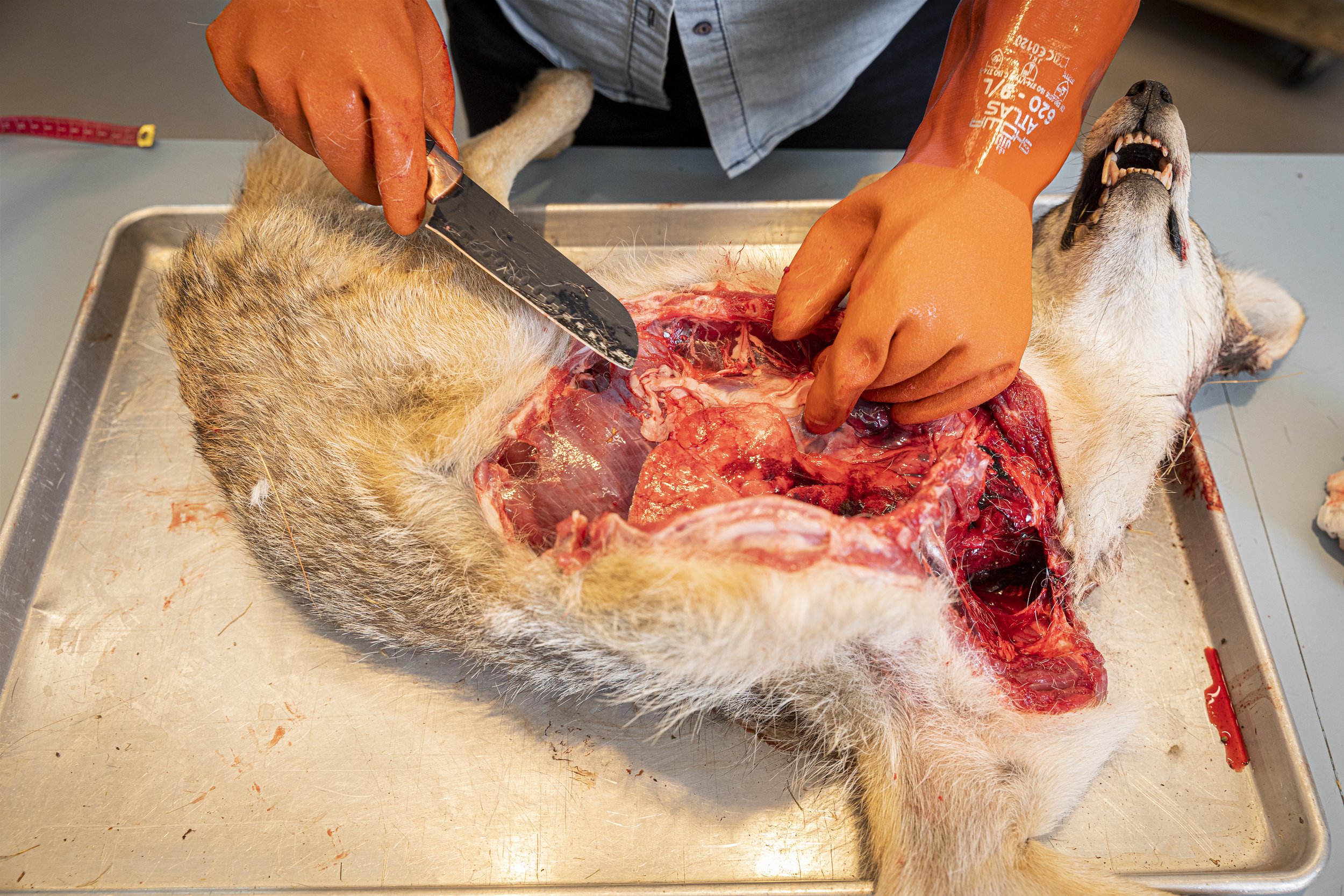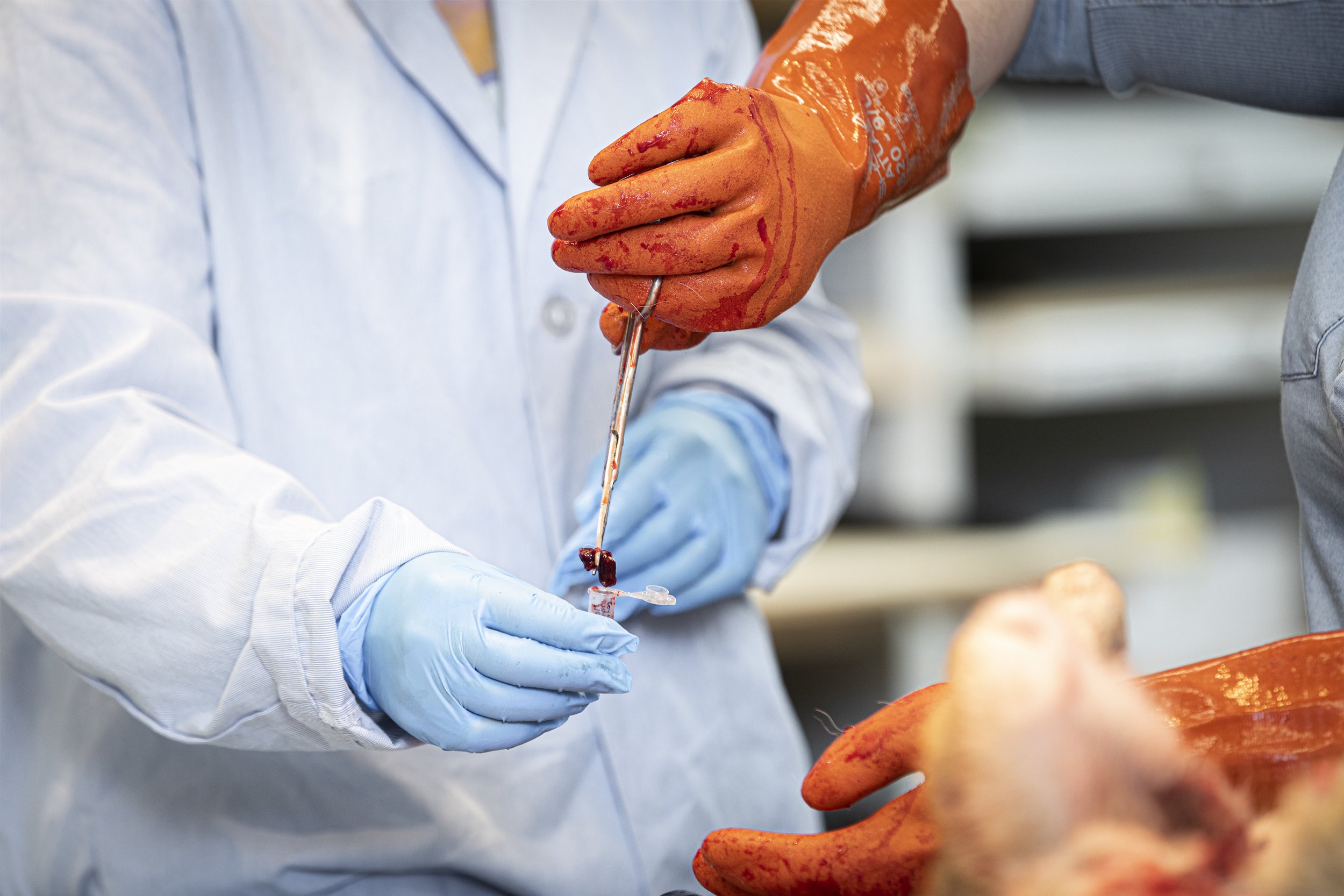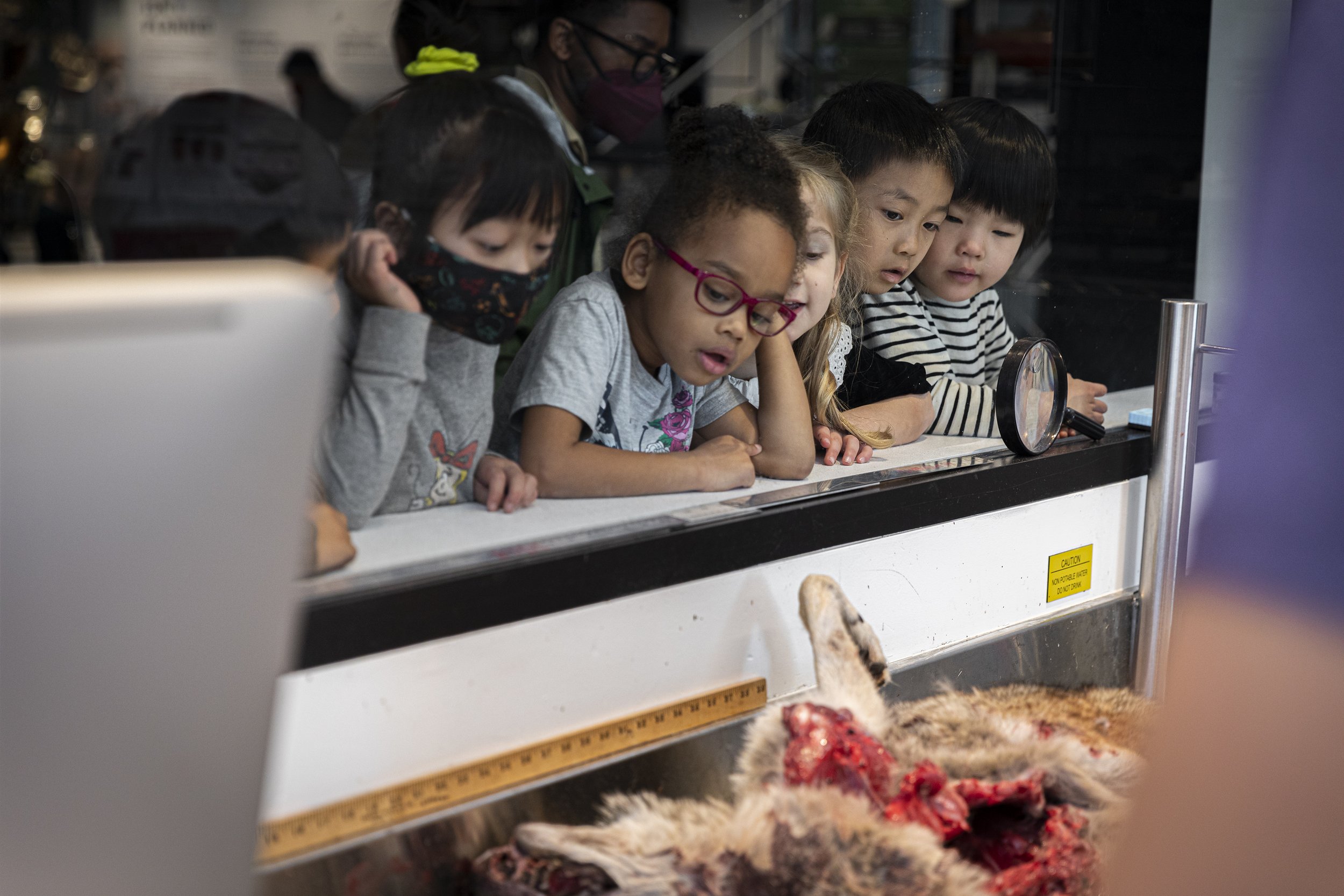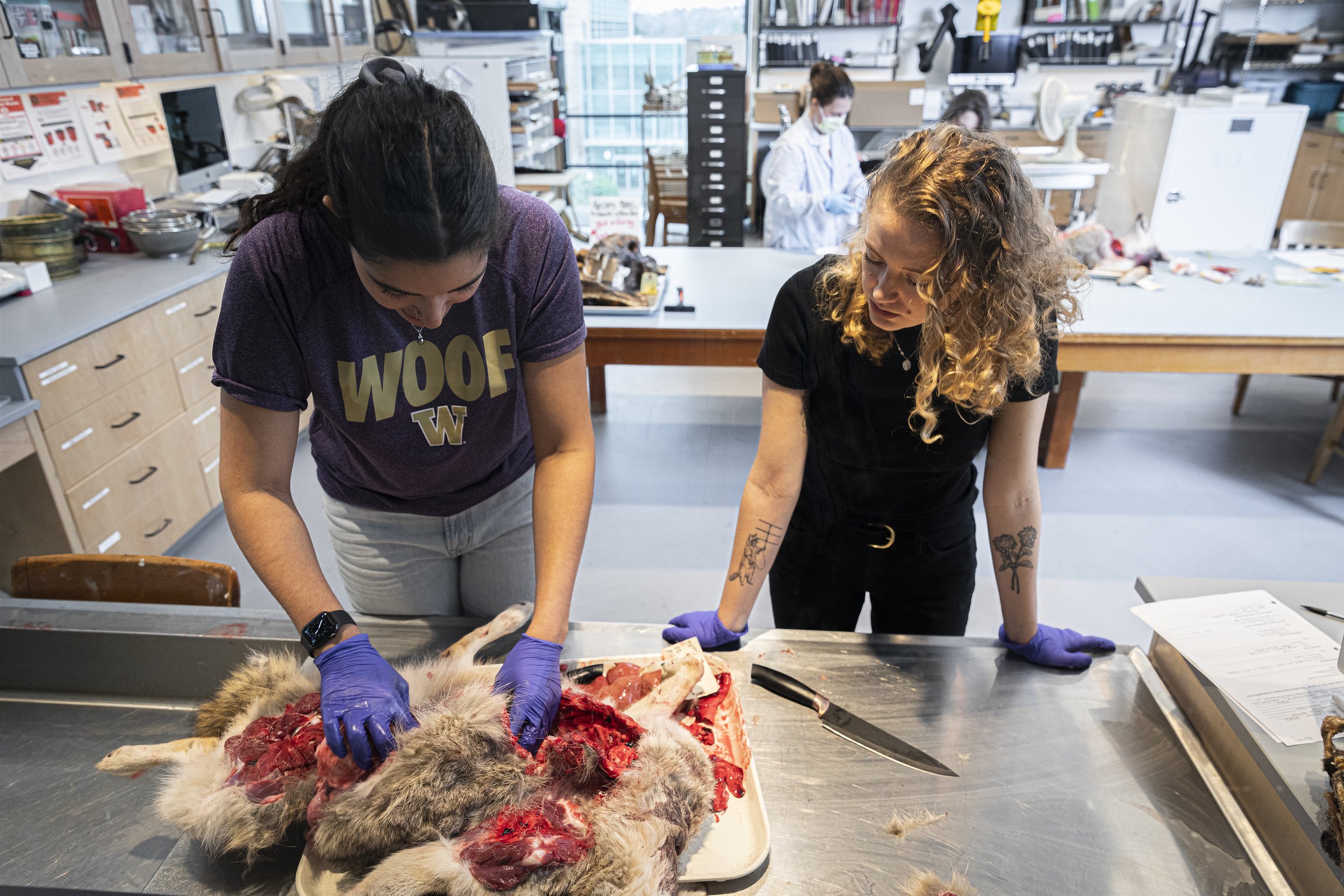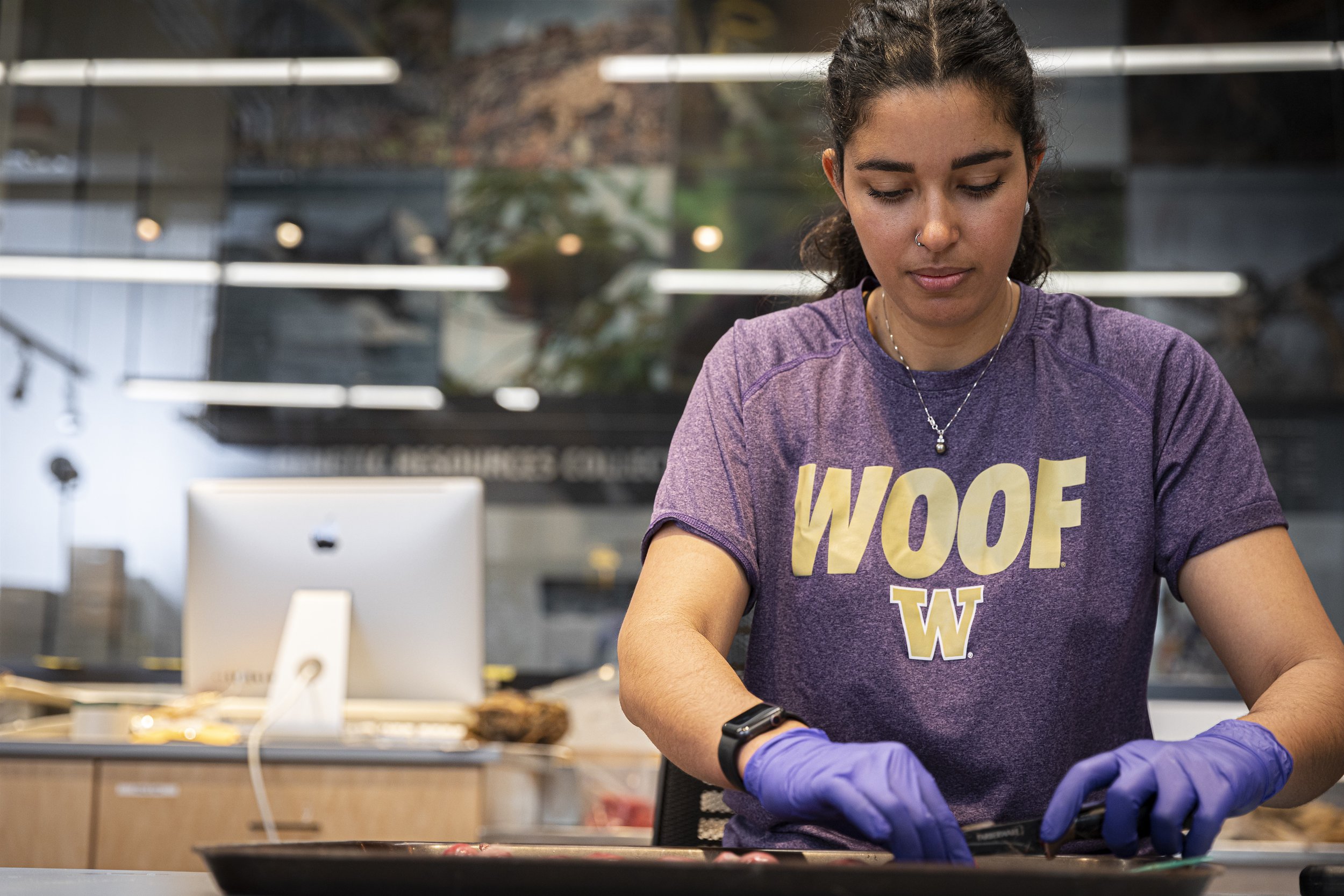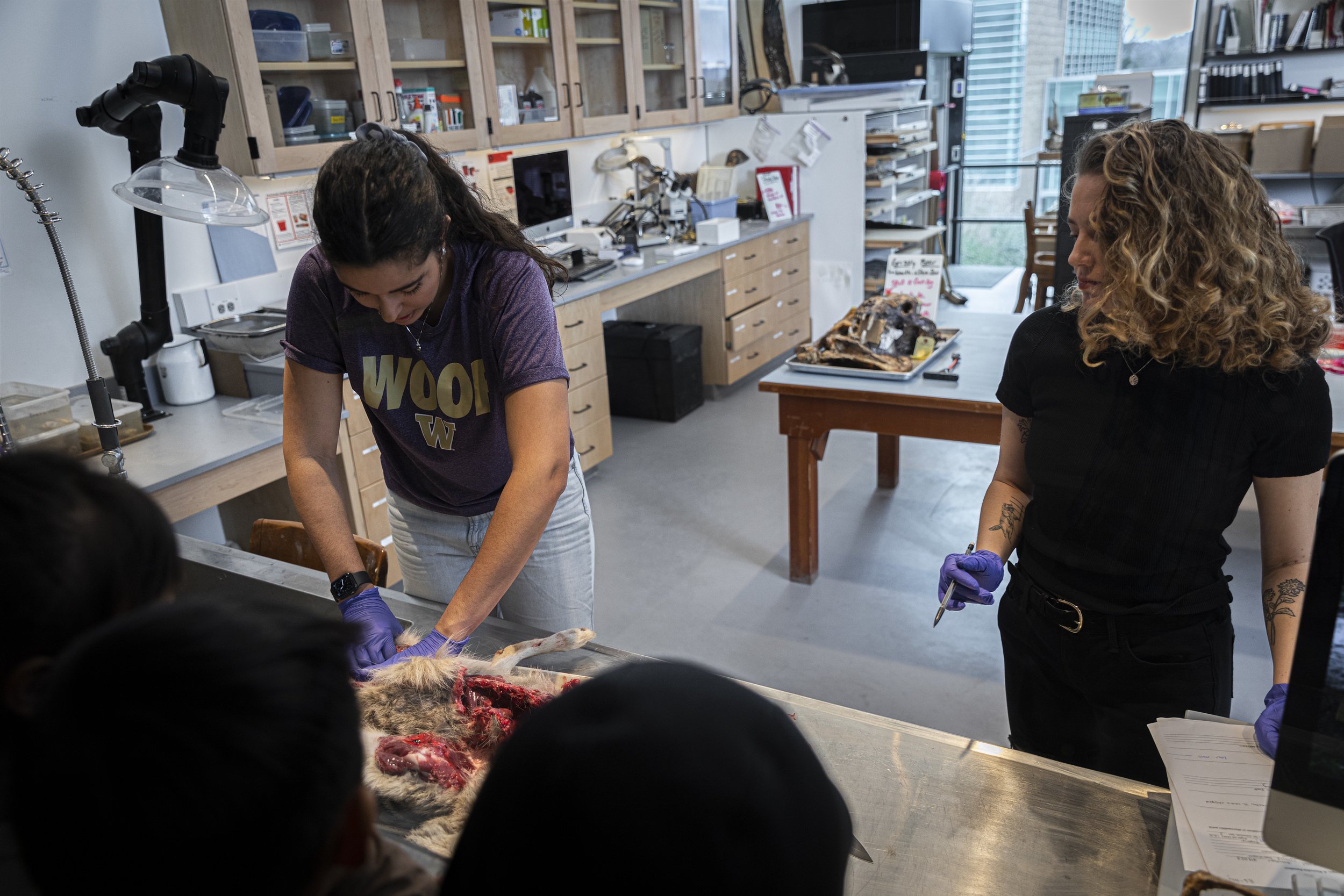Featured Project
Lessons from the Dead
The dead still have stories to tell. In this project, we use the remains of road-killed carcasses to investigate the diet, physiology, microbiome, and genomics of carnivores across Western U.S. cities.
The dead still have stories to tell. In this project, we use the remains of road-killed carcasses to investigate the diet, physiology, microbiome, and genomics of carnivores across Western U.S. cities.


a skull of a coyote hit by a car in california. collisions with wildlife are on the rise in cities, and we are studying ways to help
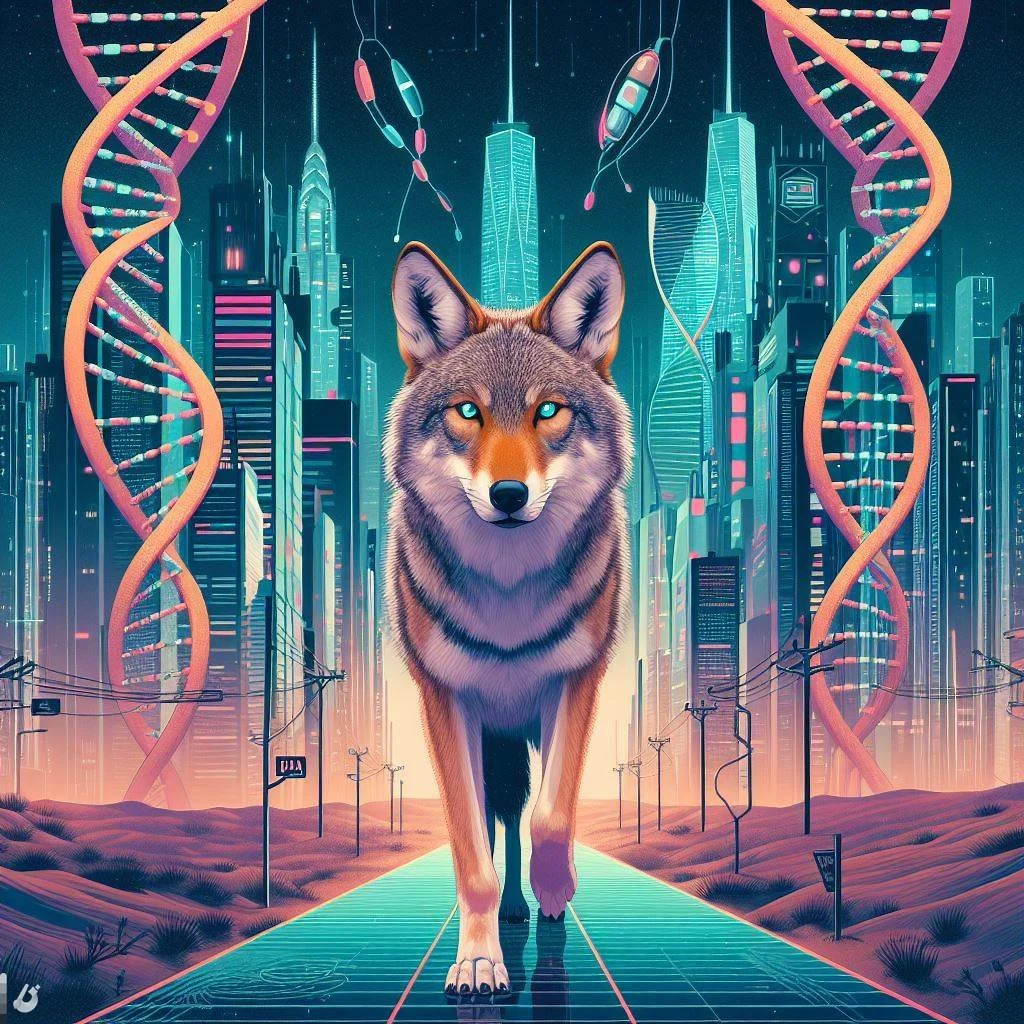
Each deceased animal represents a treasure trove of potential research material. While most of these animals died at the hands of humans (conflict removals, roadkill), we can use their untimely deaths to help conserve and learn about their living counterparts. In particular, urban regions produce a large amount of carcasses which allows us to answer a plethora of genomic and epigenomic questions. For instance, does the high concentration of urban pollutants affect the genomic mutation rate in urban wildlife?

Animals in urban areas have access to all the foods that people eat! The typical western diet is often low in nutrients, but high in fats and sugars. Just as human populations can be afflicted with diet-related diseases, so too can wildlife populations. Will an influx of sugary foods cause insulin resistance in our urban wildlife populations? Research has already suggested, yes! Some urban raccoons are hyperglycemic or even diabetic.

Human microbiomes vary between urban and rural populations, so why wouldn’t wildlife’s? More and more research is showing you are what you eat and that our microbiomes play an enormous role in metabolism, cognition, behavior, and immune response.
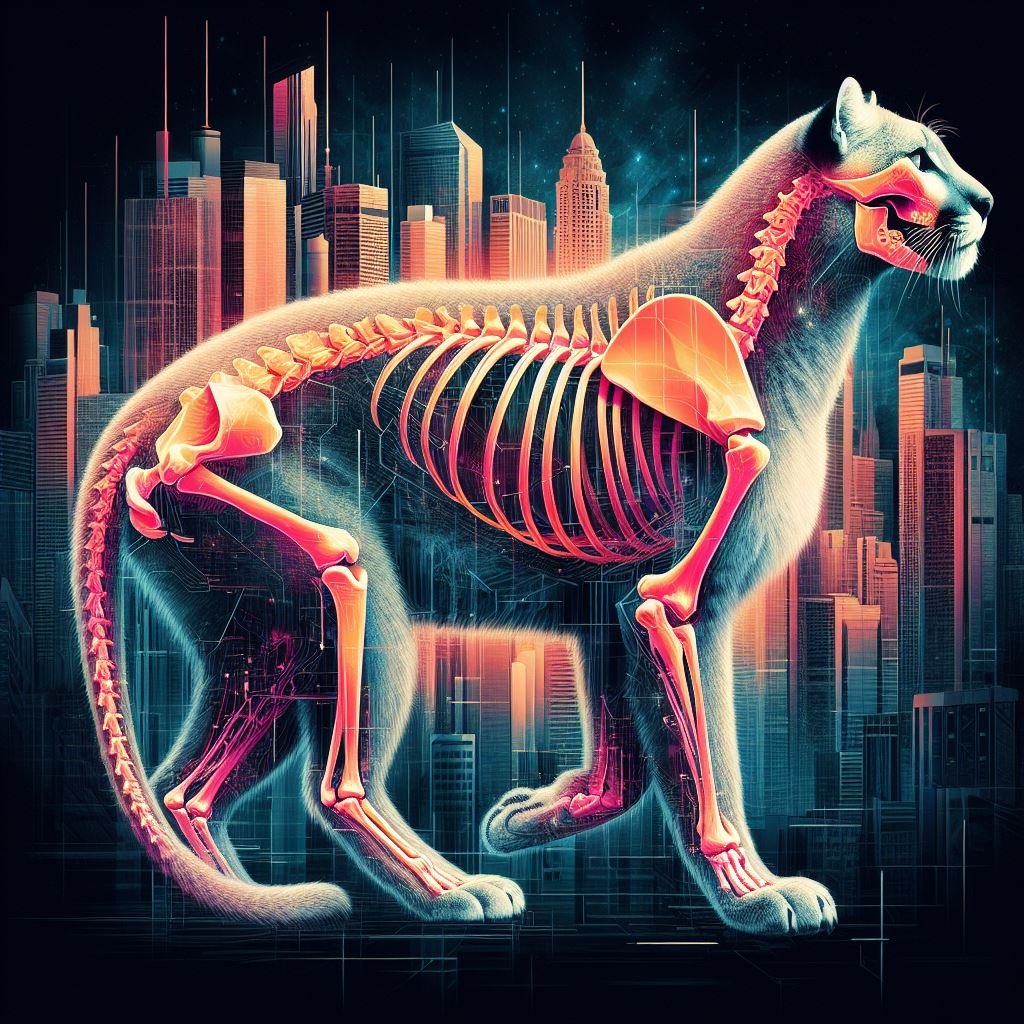
Selection pressures in urban areas are inherently different than in rural regions. Altered predator-prey interactions, novel landscape features, new food items, and a prevalence of pollutants and diseases may change the metabolism, immune system, and physical structure of wildlife.
Conducting necropsies on salvaged carcasses allows us to learn about the life of the individual and their overall bodily health. From genomics to understand animal movement, to fat stores and parasite loads that indicate disease status, to stable isotopes that tell us about individual diets and metabolism, carcasses serve as ‘Sentinels of the City’, revealing how these carnivores are coping with urban living.

We often collect genetic samples, organ samples, ectoparasites (ticks, fleas etc.) and endoparasites (tape worms, roundworms etc.), and any tissues that look abnormal as well as making a holistic decision on body condition. The skulls and baculum are generally accessioned to a natural history museum so that researchers can study them in the future! These necropsies are also open to the public where we hope to educate viewers young and old about the stories the dead still have to tell. You can find more information about some of this work here: https://sentinelsofthecity.wixsite.com/sentinelsofthecity.
